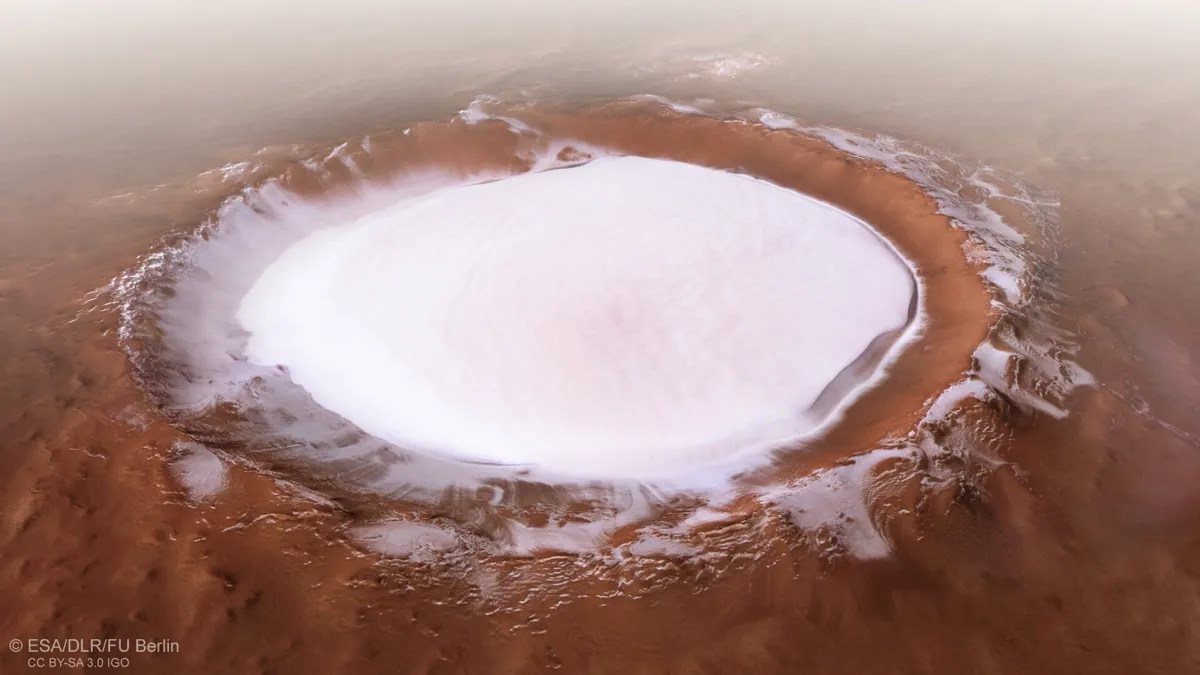Dune is the informal name for the planet Arrakis, a rugged desert world located in the star system Canopus and where much of the story unfolds. Its two main inhabitants are a tough group of people called the Fremen, and the native Shai-Hulud – a species of giant sandworm that lives for thousands of years and can grow to more than two kilometres in length.
The major diet of the Shai-Hulud is sand, supplemented with tiny organisms known as sand plankton. As they digest this rather bland fare, their metabolism releases oxygen – which perhaps isn’t so far-fetched given that sand is just silicon dioxide (an atom of silicon bonded to two atoms of oxygen). And this gives Arrakis an atmosphere that’s breathable to humans.
On Earth, we owe our breathable atmosphere to photosynthesis by plants and bacteria. These take in carbon dioxide and water, combine them with sunlight to create food for themselves in the form of sugars, and give out oxygen along the way.
Humans – and animal life in general – could not have evolved on Earth had it not been for the Great Oxygenation Event between 2 and 2.4 billion years ago, when photosynthesising cyanobacteria living in the planet’s early oceans spewed oxygen into the atmosphere.
Read more about the science of Dune:
- Could we make a superhuman, like Dune's hero?
- Where the ideas behind the Dune's strange universe came from
“This culminated in an atmosphere that could support metazoans [multicellular organisms] around 540 million years ago and then us somewhat later,” says Prof Gary King, of Louisiana State University.
King is researching the possibility of using photosynthesising bacteria – also known as phototrophs – to introduce oxygen into the atmosphere of Mars. This process of engineering an alien world to make it more like our own, and potentially habitable by humans, is sometimes known as ‘terraforming’.
In 2012, NASA’s Curiosity rover found direct evidence for the presence of water on Mars – a key ingredient for photosynthesis. Most of the water is frozen solid, however. One way King’s terraforming plan could work is by building automated factories on Mars that generate greenhouse gases to warm the planet and melt the ice into a usable liquid form.
“Conceivably, Mars’s temperature could be raised enough to support phototrophs. But that still leaves challenges,” says King.

One potential issue is the stream of high energy radiation pouring from the Sun. On Earth, we have a magnetic field to bat away these particles. But Mars has no such protection, and this is thought to be how the planet’s original atmosphere got blasted away – a process called ‘spallation’ – some 3.5 billion years ago.
How do you stop the same thing happening again?
King believes that once microbes have established an active biosphere on Mars, then oxygen production may be able to keep pace with the spallation losses – in much the same way that plants on Earth keep pace with the consumption of oxygen by animals and other aerobic life.
Could we survive without water?
Deserts aren’t the most hospitable locations, but Dune’s Arrakis is especially harsh. Rain never falls on this desolate planet, and its human population, the Fremen, must resort to some resourceful tactics to survive.
One of their innovations is the stillsuit, a full body suit that’s designed to recycle all moisture excreted by a human. Perspiration passes through the porous inner layers of the suit, to be filtered and collected in pockets from where it can be drunk through a tube. Urine and faeces go to the thigh pads, from where water is similarly reclaimed. The suit is powered by the walking action of the wearer. As the Fremen leader Liet Kynes puts it, “With a Fremen suit in good working order, you won’t lose more than a thimbleful of moisture a day…”
Nothing quite like a stillsuit exists in the world today, because there’s not a great need for it. In space, however, the story’s quite different.

On the International Space Station (ISS) there is no natural source of water. Any new water brought to the station has to be launched on a rocket from Earth, at a cost of several thousand dollars per litre. And for that reason, the station employs a closed-loop water purification system, similar to the Fremen stillsuits, albeit on a slightly less personal scale.
The ISS system is able to recycle up to 93 per cent of the water used by the astronauts on board. That includes moisture from the air, secreted by sweating and breathing, as well as waste washing water and urine – which is purified by distillation then centrifuged to eliminate further impurities. All waste water is passed through further treatment and filtration processes to eliminate toxins and microorganisms. The purity is then tested electrically, and any water not making the grade gets processed again.
Read more about life in space:
- Worm astronauts will help us safely send humans on deep space missions
- So, you want to live on the Moon?
It may come with the yuck-factor, but the drinking water on the ISS is purer than what comes out of most domestic taps.
Similar water-preservation measures are likely to be employed on Mars, where usable liquid water will be scarce. Other measures on the Red Planet could include water harvesting from the atmosphere, or using condensers to turn vapour in the atmosphere into liquid water suitable for drinking.
A research paper published in 2018, in the journal Environmental Science & Technology, detailed a trial of such a system in Saudi Arabia. It used 35 grams of a moisture-absorbing gel to extract 37 grams of water overnight at a humidity of 60 per cent.
“This technology provides a promising solution for clean water production in arid and land-locked remote regions,” the authors of the study reported.
- This article first appeared in issue 369 of BBC Science Focus Magazine – find out how to subscribe here